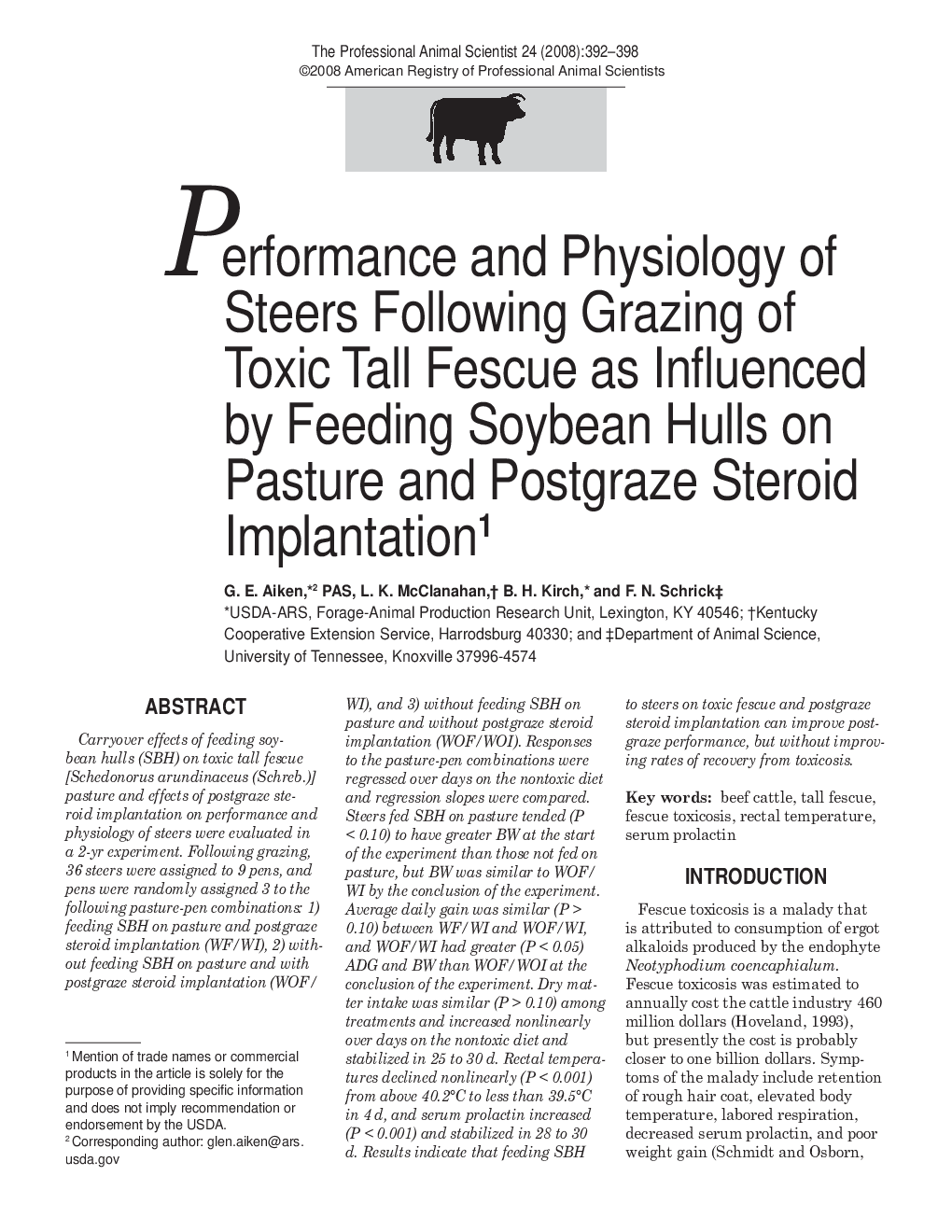| Article ID | Journal | Published Year | Pages | File Type |
|---|---|---|---|---|
| 2454262 | The Professional Animal Scientist | 2008 | 7 Pages |
Abstract
Carryover effects of feeding soybean hulls (SBH) on toxic tall fescue [Schedonorus arundinaceus (Schreb.)] pasture and effects of postgraze steroid implantation on performance and physiology of steers were evaluated in a 2-yr experiment. Following grazing, 36 steers were assigned to 9 pens, and pens were randomly assigned 3 to the following pasture-pen combinations: 1) feeding SBH on pasture and postgraze steroid implantation (WF/WI), 2) without feeding SBH on pasture and with postgraze steroid implantation (WOF/WI), and 3) without feeding SBH on pasture and without postgraze steroid implantation (WOF/WOI). Responses to the pasture-pen combinations were regressed over days on the nontoxic diet and regression slopes were compared. Steers fed SBH on pasture tended (P < 0.10) to have greater BW at the start of the experiment than those not fed on pasture, but BW was similar to WOF/WI by the conclusion of the experiment. Average daily gain was similar (P > 0.10) between WF/WI and WOF/WI, and WOF/WI had greater (P < 0.05) ADG and BW than WOF/WOI at the conclusion of the experiment. Dry matter intake was similar (P > 0.10) among treatments and increased nonlinearly over days on the nontoxic diet and stabilized in 25 to 30 d. Rectal temperatures declined nonlinearly (P < 0.001) from above 40.2°C to less than 39.5°C in 4 d, and serum prolactin increased (P < 0.001) and stabilized in 28 to 30 d. Results indicate that feeding SBH to steers on toxic fescue and postgraze steroid implantation can improve postgraze performance, but without improving rates of recovery from toxicosis.
Related Topics
Life Sciences
Agricultural and Biological Sciences
Animal Science and Zoology
Authors
G.E. PAS, L.K. McClanahan, B.H. Kirch, F.N. Schrick,
